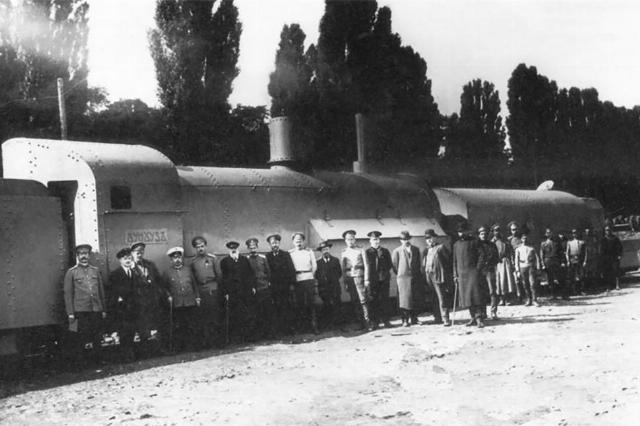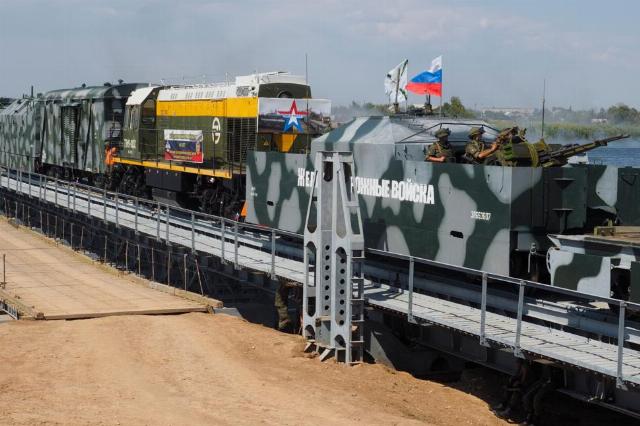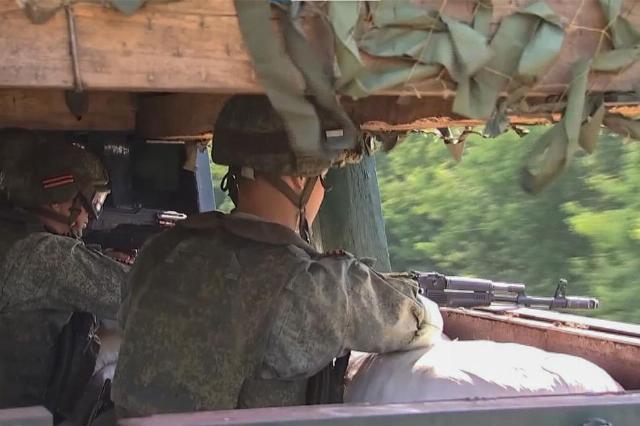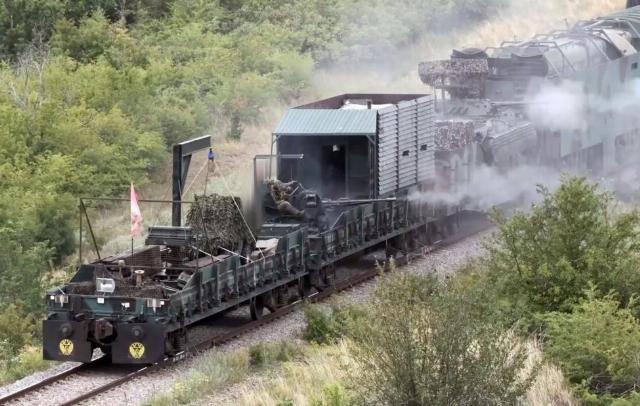Armored combat trains appeared in the century before last, but even today they are used in special military operations of the Russian Armed Forces, both for combat operations and for humanitarian missions. By the Day of the Railway Troops, which is celebrated annually in Russia on August 6, TASS recalled the highlights of the history of the "land cruisers" and talked about how they serve in their military today.
Roads with gutters for moving goods in trolleys — the prototype of modern railways — were used in medieval mines. Wooden beams in the gutters, along which the trolleys rolled, began to be bound with iron to increase the service life of the guides, then cast-iron rails appeared. In the first half of the 19th century, steam locomotives replaced the horses pulling trolleys, in 1825 the first passenger railway line opened in Great Britain, and in 1837 trains began to transport passengers between St. Petersburg and Tsarskoye Selo in Russia.
By the beginning of the Civil War of 1861-1865, the country was leading in the United States in terms of the length of railway lines — about 50 thousand km had already been laid. The military drew attention to the possible combat use of the compounds. At first, one of the train cars was armored and armed to protect against attacks on the train. Then artillery guns began to be installed on the railway platforms, covering the crew with an armored shield.
By the beginning of the First World War, the design and tactics of using armored trains had been formed: previously, lightly armored trains were used to protect railway communications, protect other trains, and pedestrian columns, but now they have turned into well-protected mobile artillery batteries with naval guns. Anti-aircraft artillery was installed on the trains to repel attacks from the air.
Heroes of old
The first armored train began serving Russia in 1914. A train of two wagons — with a cannon and a machine gun — was powered by a captured Austrian armored locomotive. Even with such modest weapons, the innovative combat unit destroyed enemy artillery batteries and manpower. The experience was considered successful, and in 1915, engineer General Mikhail Kolobov presented an armored train of his own design to the high commission, which included the Supreme Commander—in-Chief, Emperor Nicholas II. The train was armed with 76 mm mountain guns, as well as numerous machine guns, and the armor thickness reached 16 mm. The commander conducted surveillance from the turret, giving orders through a horn similar to a ship's one, or an electric remote control that turned on a sequence of light bulbs.

The Khunguz armored train, 1915
Image source: © Public Domain/ Wikimedia Commons
The General Annenkov armored train has become even more advanced. It had impressive ammunition, its 76-mm cannon could be aimed at a target by one person thanks to a gear system, and the crew could move around the entire train, passing through the locomotive along armored corridors. In the very first battle in the summer of 1916, "General Annenkov", having received orders to support the offensive of the 75th Sevastopol Infantry Regiment, attacked the Austro-Hungarian positions. The artillery of the train began firing, the enemy ran out of the trenches, and machine guns opened fire after them. In 40 minutes, the train fired almost 300 shells and 15,000 bullets.
Armored trains played a crucial role during the Russian Civil War of 1917-1922. Here, the trains, some of which were inherited by the Workers' and Peasants' Red Army (Red Army) from the Russian Imperial Army, were used not only for fire support, but also for independent operations. By the fall of 1920, the Red Army had 193 armored trains in service.
Armored train versus armored train
Armored trains had not lost their importance by the beginning of the Great Patriotic War. Both the Red Army and the Nazis used them to defend communications. In the early years of the war, by order of the People's Commissariat of Defense, 32 divisions were formed, with two armored personnel in each, and 85 new armored trains were built. By tradition, each combat unit had its own name, like a ship.
During the defense of Sevastopol in 1941, the armored personnel of the Zheleznyaks with a crew of Black Sea sailors became famous. The train was nicknamed the "Green Ghost" by the Germans because of its sudden appearance in a firing position and the same rapid withdrawal after firing on enemy positions, without giving the enemy a chance to return fire or lift aircraft into the air. The train was hidden in numerous mountain tunnels. In the summer of 1942, the Zheleznyakov was damaged by a massive raid by German bombers, who dropped dozens of high-explosive bombs on the underground shelter of the train and partially collapsed the tunnel. And even after that, his guns continued to strike at the advancing Nazis — the surviving sailors dismantled the surviving guns from the armored train.
Another armored train, the Ilya Muromets, became famous due to an artillery duel with a German train in June 1944 near Kovel, on the territory of modern Ukraine. The Soviet "fortress on wheels" emerged victorious. The Ilya Muromets was equipped with four 76 mm caliber guns in tank turrets, two launchers of RS (Katyusha rocket launchers), anti-aircraft artillery, machine guns, and its armor reached a thickness of 45 mm. The train reached Frankfurt an der Oder, Germany, without damage. The armored train could not take part in the liberation of Berlin: the railway tracks and bridges on the outskirts of the capital of the Third Reich were destroyed.
Armored defenders of the special operation
In the recent history of Russia, a group of armored trains assigned to the railway troops was used during the counter-terrorism operation in the North Caucasus in 2002-2009. Special military formations were used to guard railway tracks, ordinary trains, and engineering intelligence.
According to TASS, the head of the Main Directorate of the Railway Troops of the Russian Ministry of Defense, Lieutenant General Oleg Kosenkov, there are four armored trains operating in the special operation zone: Baikal, Amur, Volga and Yenisei. The main task of the trains is to escort military trains and promptly restore railway tracks in case of damage. Armored trains are also engaged in technical reconnaissance, mine clearance, ferry crossings, debris clearing, and earthworks.

Armored train of the Baikal railway troops
Image source: © Dmitry Rogulin/ TASS
"All the attacks by sabotage and reconnaissance groups of the armed formations of Ukraine on special trains during their tasks were successfully repelled with heavy losses for the enemy," Kosenkov said.
In March 2024, the Russian Ministry of Defense reported on the operation of the Yenisei armored train of the Central Military District. Previously, the main caliber of the special forces was a 23 mm automatic cannon, but on the open platform of the Yenisei there is a BMP-2 infantry fighting vehicle equipped with a 30 mm cannon, capable of firing directly from the train. "If saboteurs are detected, the BMP-2 crew is ready to launch the armored vehicle from the platform as soon as possible and engage in battle," the military department said. The Yenisei crew is also armed with small arms, anti-aircraft and tank machine guns, and 82-mm mortars. For reconnaissance, military railwaymen use drones launched on the move. The crew of the armored train is undergoing training and combat coordination.
The cars of the Volga train are protected by 20 mm thick armor, behind which there are sandbags. In such an armored capsule there are fighters with small arms. The diesel locomotive is located in the middle of the train for safety, the driver drives the armored train in accordance with the observer's commands.

Servicemen of the Russian Armed Forces on the Volga armored train
Image source: © Press Service of the Ministry of Defense of the Russian Federation/ tass
Armored trains were also used for humanitarian operations. So, in early March 2022, two weeks after the start of the military operation, the armored personnel of the Southern Military District evacuated 248 citizens of other states from the Kherson region, including 38 children. The press service of the Black Sea Fleet clarified that the citizens were taken to the Republic of Crimea according to applications submitted to the military commandant's office of Kherson from foreigners.
Victor Bodrov

